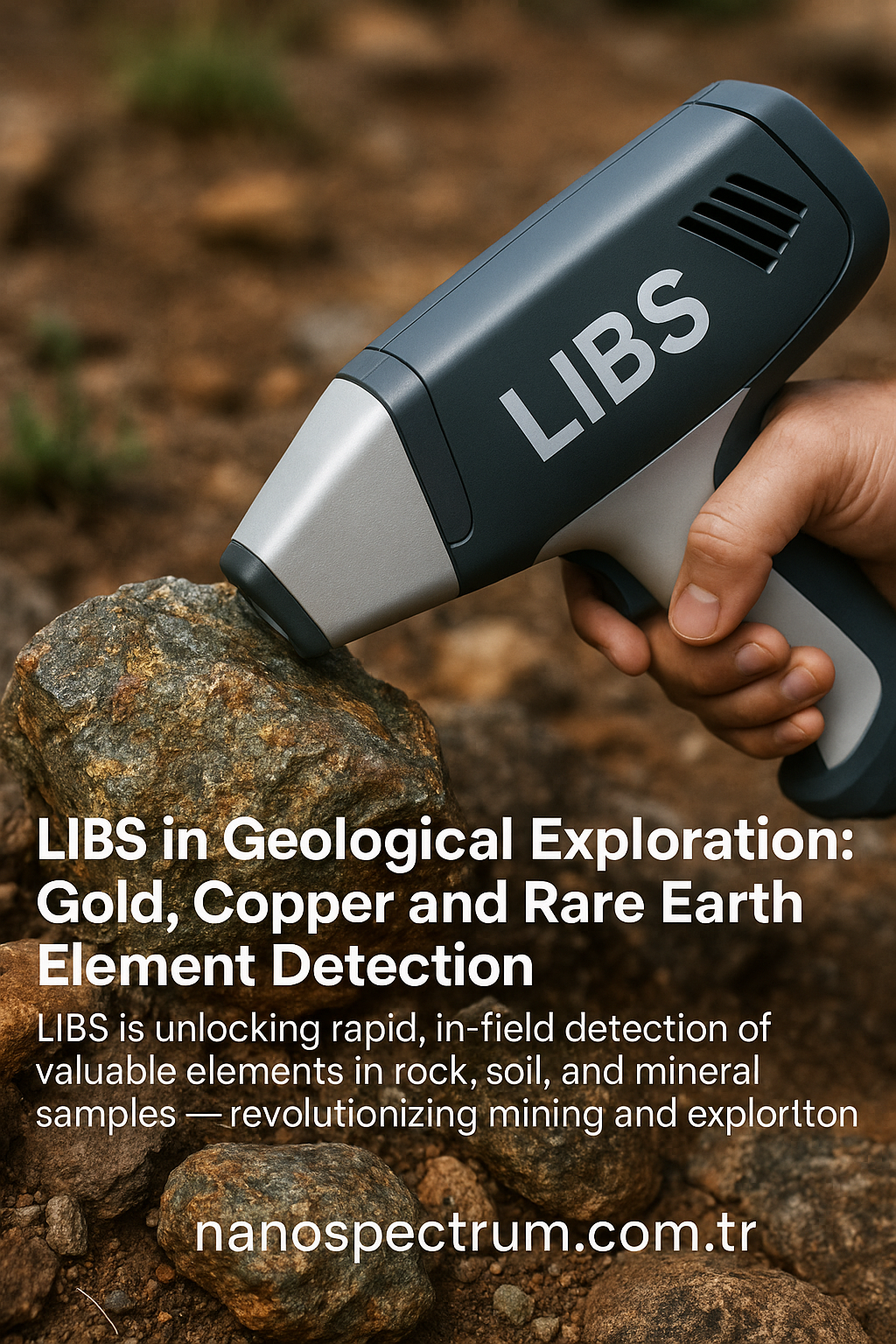LIBS in Geological Exploration: Gold, Copper and Rare Earth Element Detection

LIBS is unlocking rapid, in-field detection of valuable elements in rock, soil, and mineral samples — revolutionizing mining and exploration.
Why Use LIBS in Geology?
Traditional geological assays can take days or weeks, requiring lab analysis. LIBS (Laser-Induced Breakdown Spectroscopy), on the other hand, delivers elemental data on-site — in seconds. This capability enables faster decision-making, reduces costs, and supports greenfield exploration in remote regions.
What Can LIBS Detect in Geological Samples?
- Precious Metals: Gold (Au), Silver (Ag), Platinum (Pt)
- Base Metals: Copper (Cu), Zinc (Zn), Nickel (Ni), Iron (Fe)
- Rare Earth Elements (REEs): Neodymium (Nd), Yttrium (Y), Cerium (Ce), etc.
- Other Geomarkers: Sulfur (S), Phosphorus (P), Lithium (Li), etc.
Field Applications of LIBS in Exploration
- Core logging and drill sample analysis
- Ore grade mapping and deposit modeling
- Real-time analysis during trenching or excavation
- Portable LIBS for handheld use in rugged terrain
LIBS vs XRF in Mining
| Feature | LIBS | XRF |
|---|---|---|
| Light Elements (e.g. Li, Be, B) | ✔️ Detectable | ❌ Not detectable |
| Portability | Very high | High |
| Analysis Speed | Milliseconds | 1–2 seconds |
| Surface Sensitivity | High (requires fresh surfaces) | Lower sensitivity to coatings |
Challenges in Geological LIBS
- Sample heterogeneity can affect accuracy
- Moisture and surface roughness require careful calibration
- Quantification still requires certified reference materials
Case Study: Detecting Copper in Volcanic Rocks
Geologists using LIBS in a South American copper belt rapidly scanned rock outcrops and drill cores. The system revealed Cu concentrations in seconds, guiding where to sample deeper. This reduced exploration time by over 40% compared to lab-based workflows.
Conclusion
LIBS is a disruptive technology in the exploration toolbox. Its ability to provide fast, on-site elemental analysis makes it invaluable for identifying resource-rich zones, guiding excavation, and reducing unnecessary drilling. As LIBS systems continue to evolve, expect to see them embedded in autonomous drones, field robots, and AI-assisted exploration platforms.